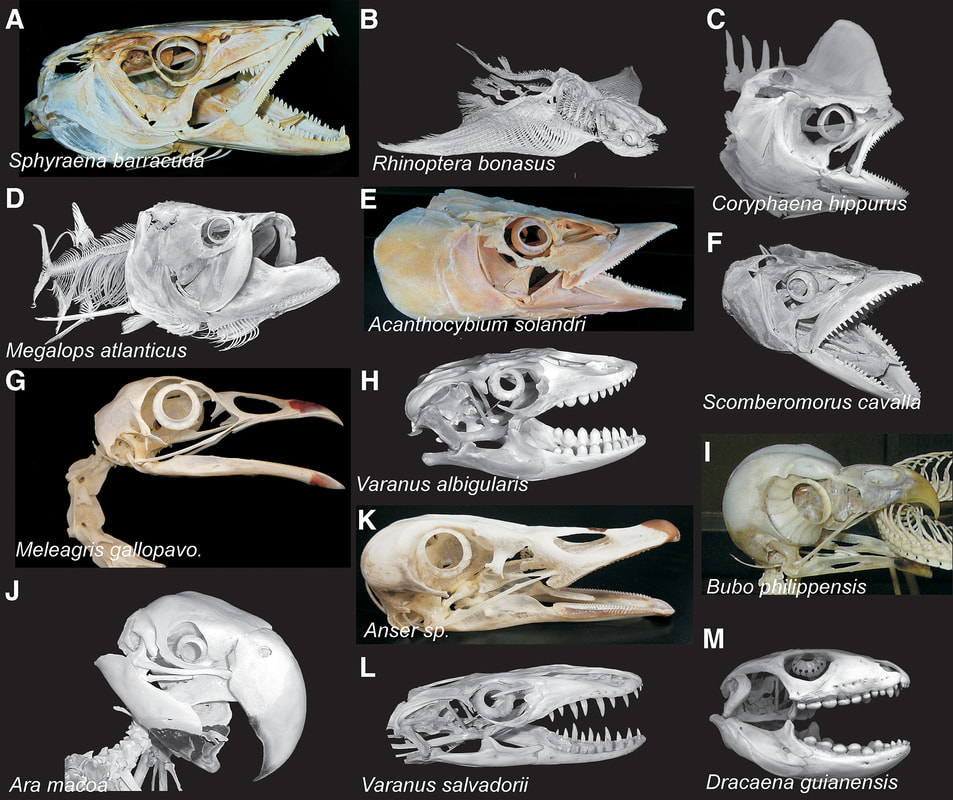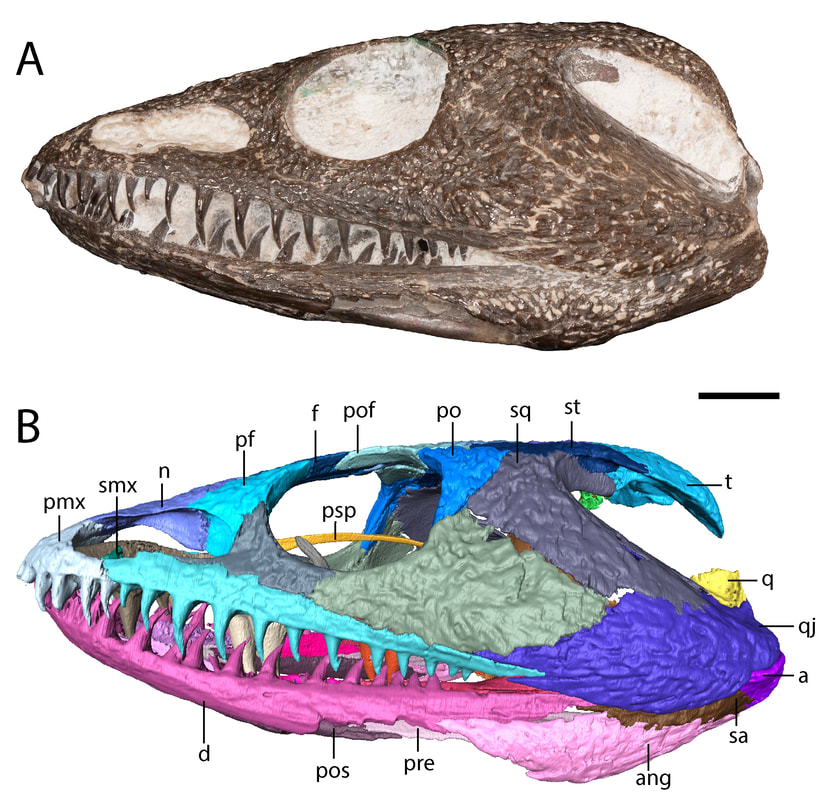|
Where are the temnospondyls today? Blasted off the face of the earth by an asteroid? Still lurking in some deep sea reservoir? Living out the cryptozoological lifestyle? No, no, and no. Notwithstanding various hypothesized relationships of temnospondyls to modern amphibians, the temnospondyls peter out after the Late Triassic. They make their last stand in the land down under, today a veritable hotbed of weird animals not found anywhere else. Koolasuchus cleelandi Koolasuchus is named for Lesley Kool, the primary preparator of the material, and Mike Cleeland, who found the holotype. The phonetically cool name ended up being a creative riff on the inferred 'cool' climate of Australia at the time (more on that below). Compared to other temnospondyls, Koolasuchus is a BIG-TIME *superstar.* It first appeared in the critically acclaimed documentary Walking with Dinosaurs (episode 5 if you want to get specific) just two years after being described. Unfortunately, most people don't know that this is a temnospondyl because the video title (the one from the official BBC account) calls it a 'giant crocodile'.... At least they call it an amphibian in the video, but it would surprise you how many people think that amphibians = reptiles. In North America, we're blessed (or cursed, depending on how you look at it) with an abundance of the large-bodied metoposaurids, which grew over 2 meters as adults. But practically everywhere you look, particularly once you get past the Early Triassic and the recovery from the Permo-Triassic mass extinction, the temnospondyls are BIG. So it makes sense that we find lots of temnospondyls in Texas - everything's bigger in Texas, right? Wrong! Texas actually preserves some of the most interesting tiny temnospondyls, some of the smallest known from the entire Triassic period around the world. Featured this week are the two tiny temnos from Texas!
Title: A juvenile specimen of the trematopid Acheloma from Richards Spur, Oklahoma and challenges of trematopid ontogeny. Authors: B.M. Gee, J.J. Bevitt, R.R. Reisz Journal: Frontiers in Earth Science, v. 7, p. 38 Link to paper - this is an open access paper than anyone can read! Busy week, so just a short post this week about some bones in the eye (yes, they actually are in the eye); it's not entirely random - Lars Schmitz, my former anatomy professor, is coming to UTM to give a talk on the evolutionary signals in vertebrate eyes (an unsurprising topic selection if you know him).  Examples of scleral rings in vertebrates. Common names in alphabetical order of images: great barracuda, cownose ray, mahi mahi, tarpon, wahoo, king mackerel, wild turkey, rock monitor lizard, eagle-owl, scarlet macaw, goose, crocodile monitor lizard, caiman lizard (figure from Franz-Odendaal, 2018) |
About the blogA blog on all things temnospondyl written by someone who spends too much time thinking about them. Covers all aspects of temnospondyl paleobiology and ongoing research (not just mine). Categories
All
Archives
January 2024
|

 RSS Feed
RSS Feed
